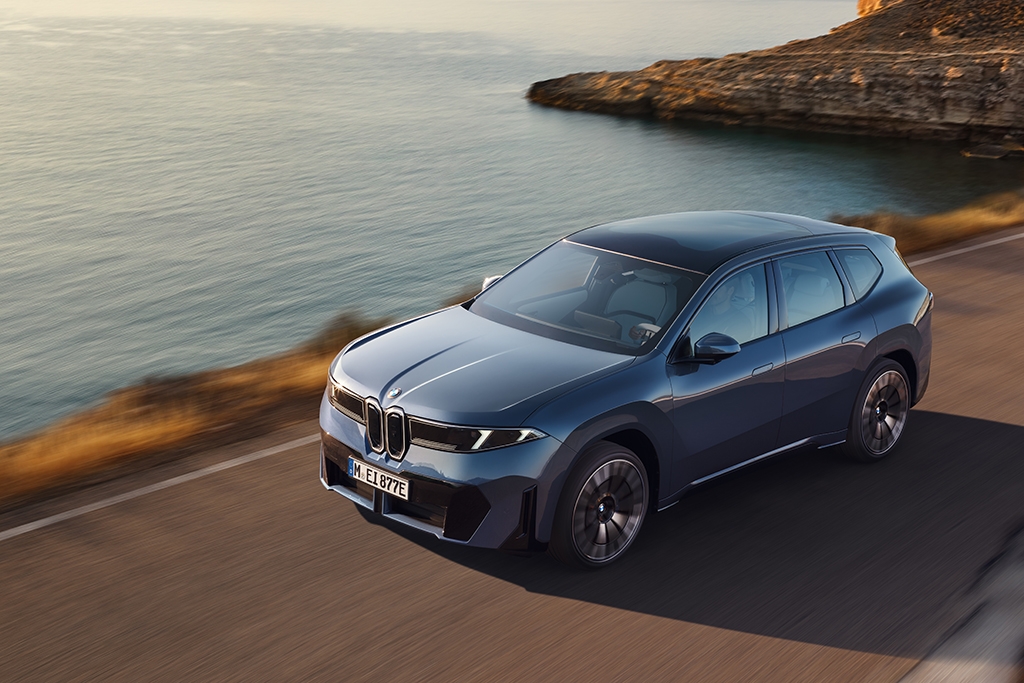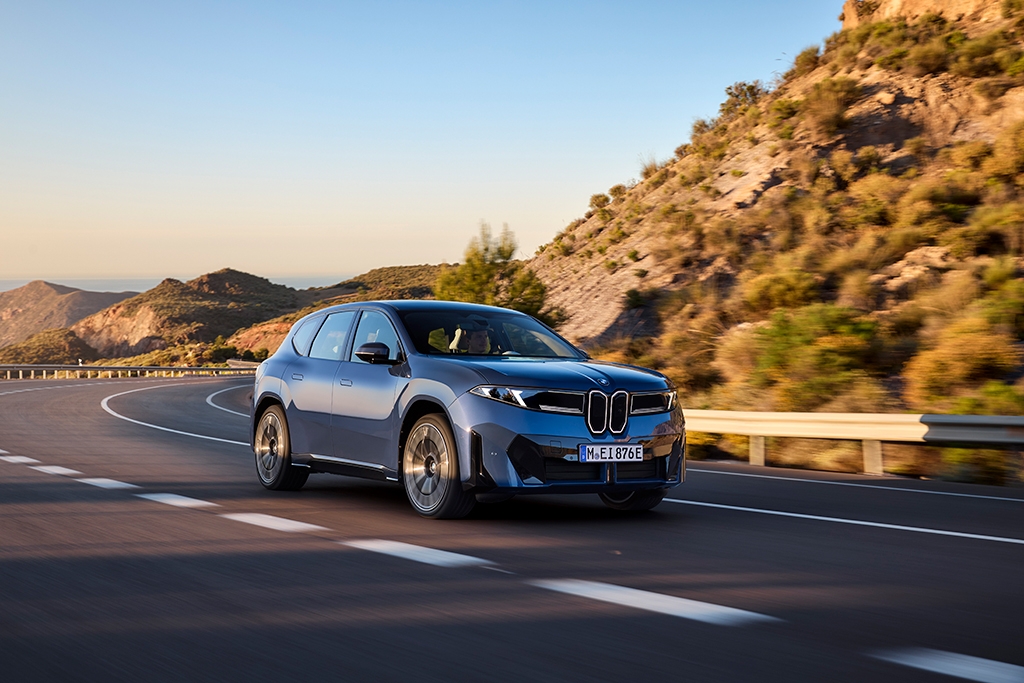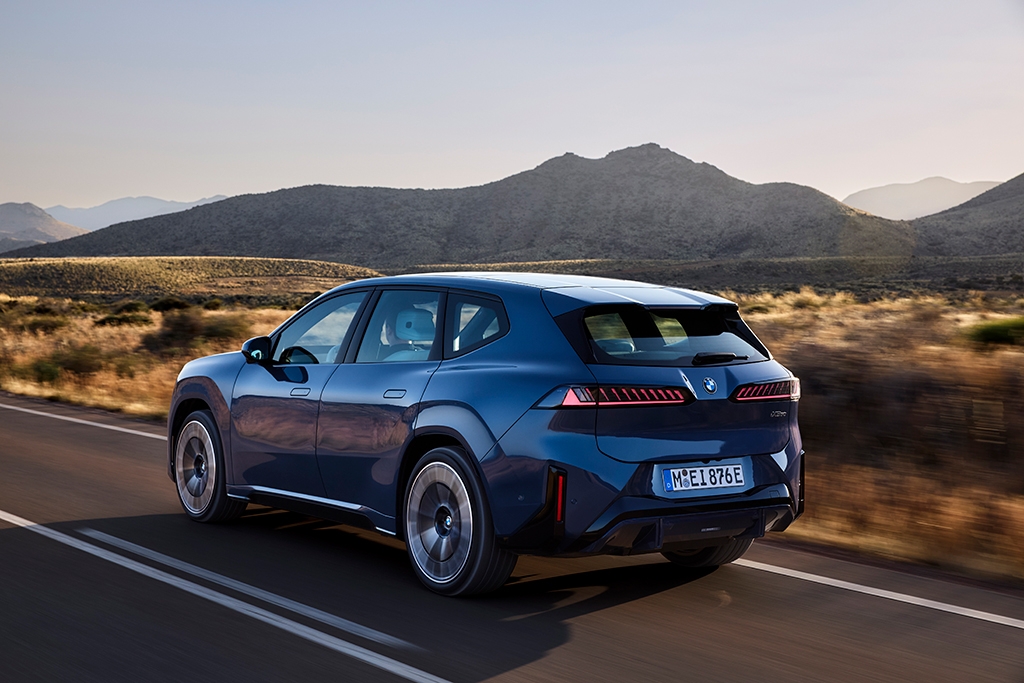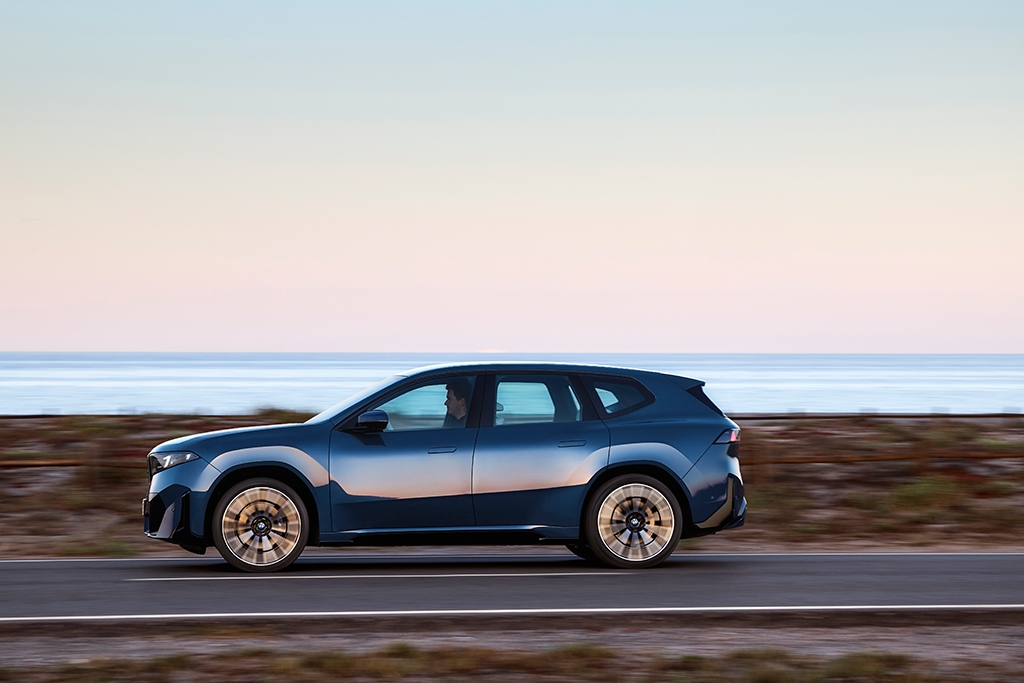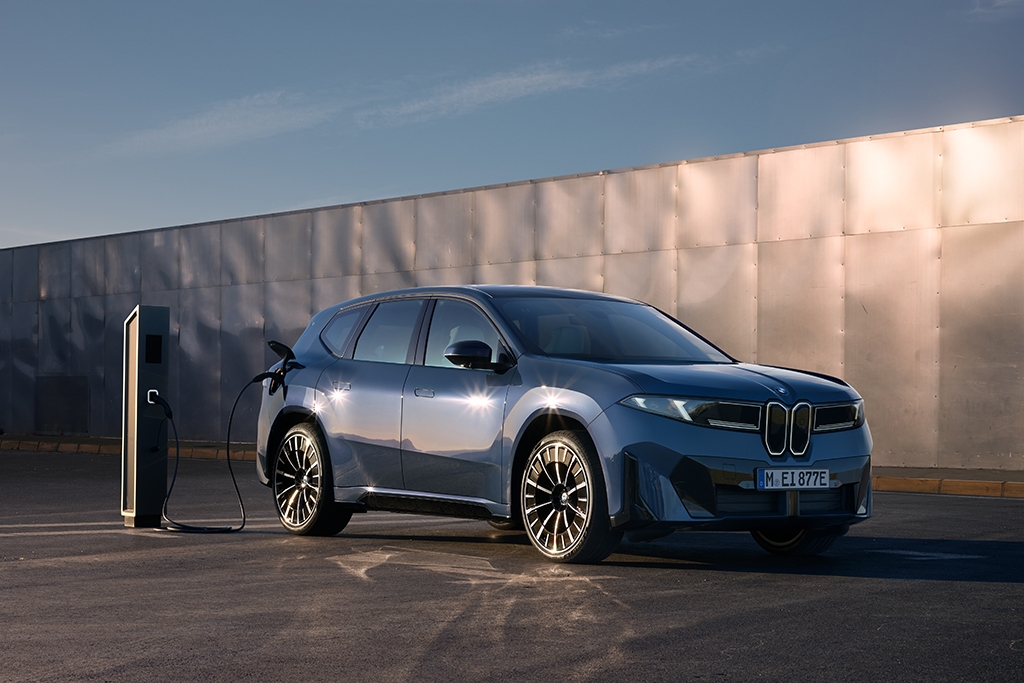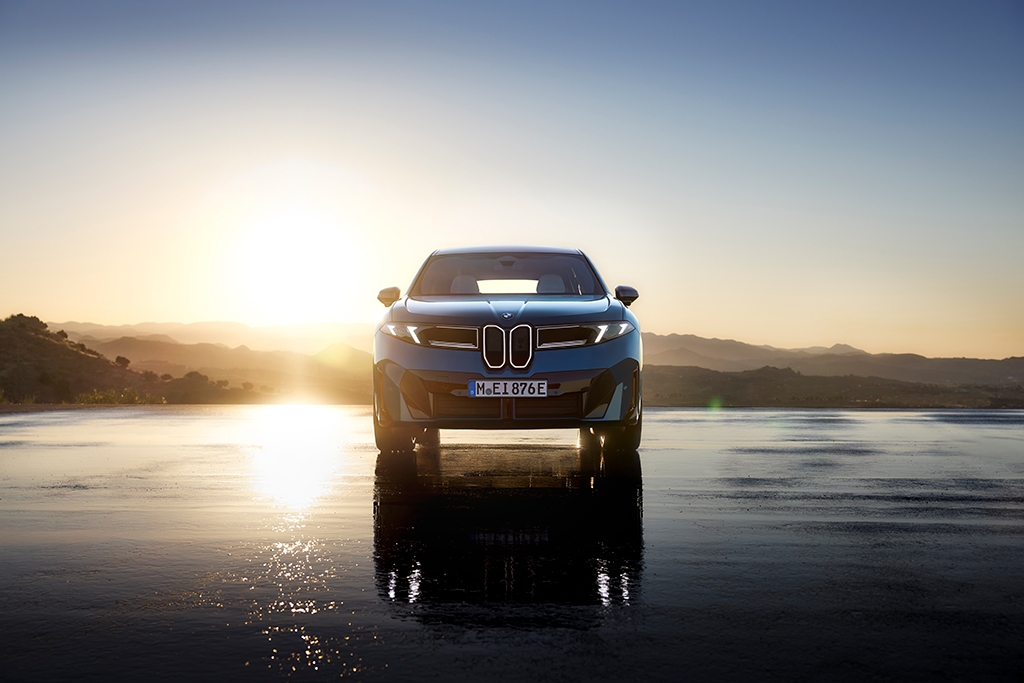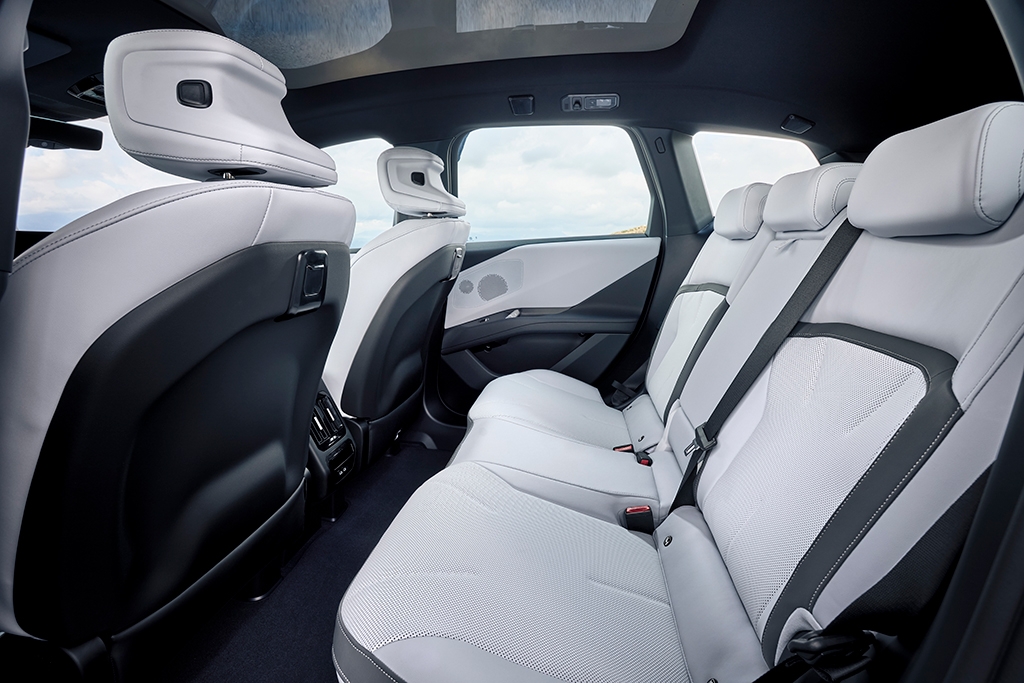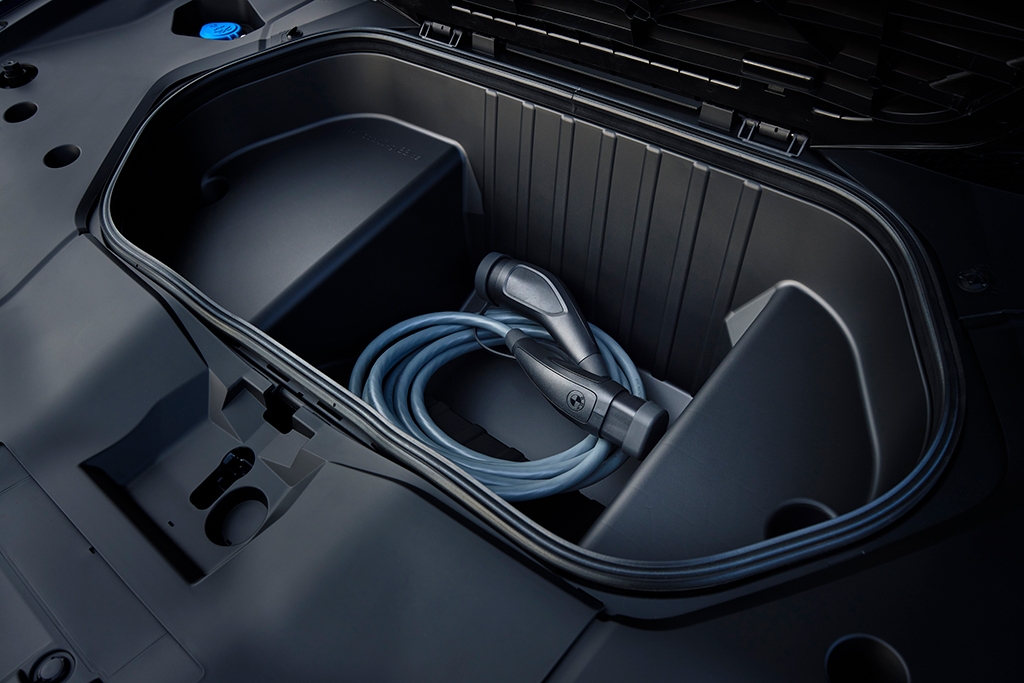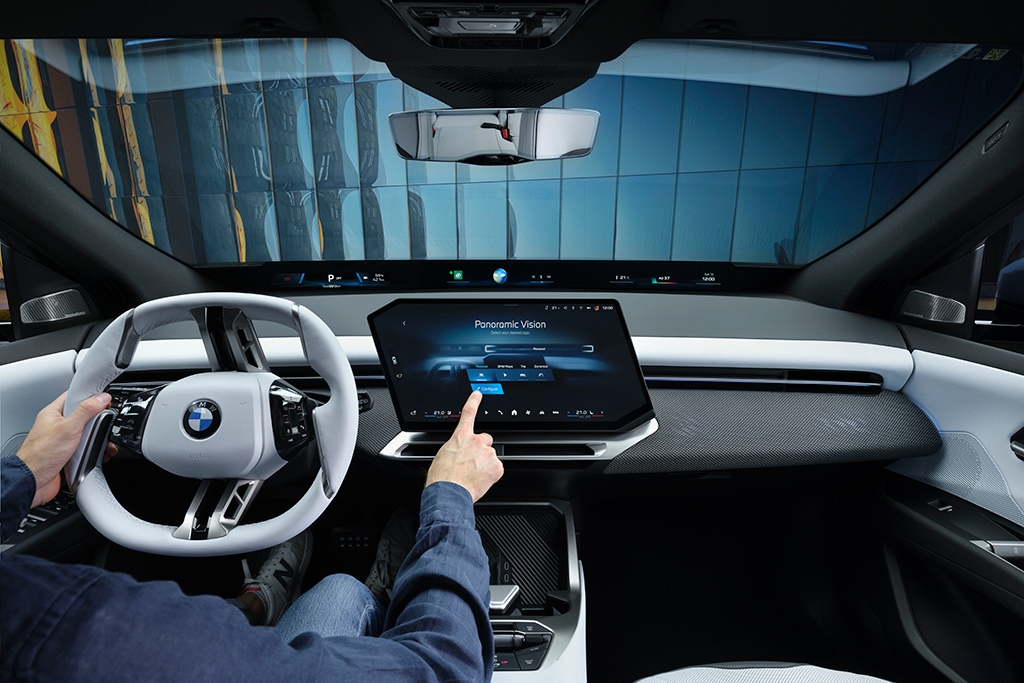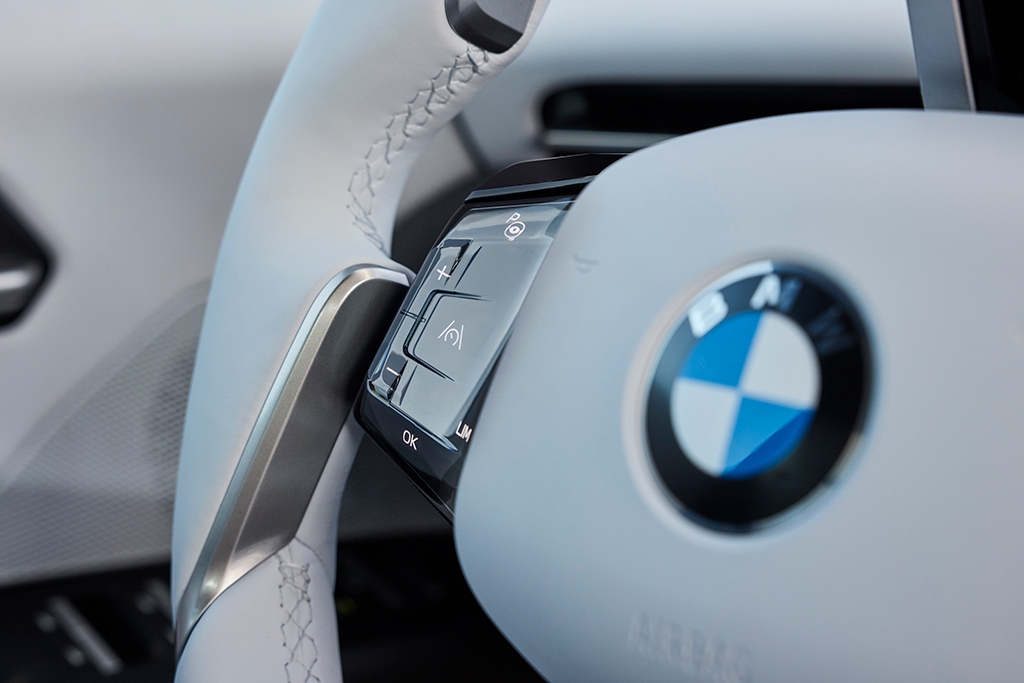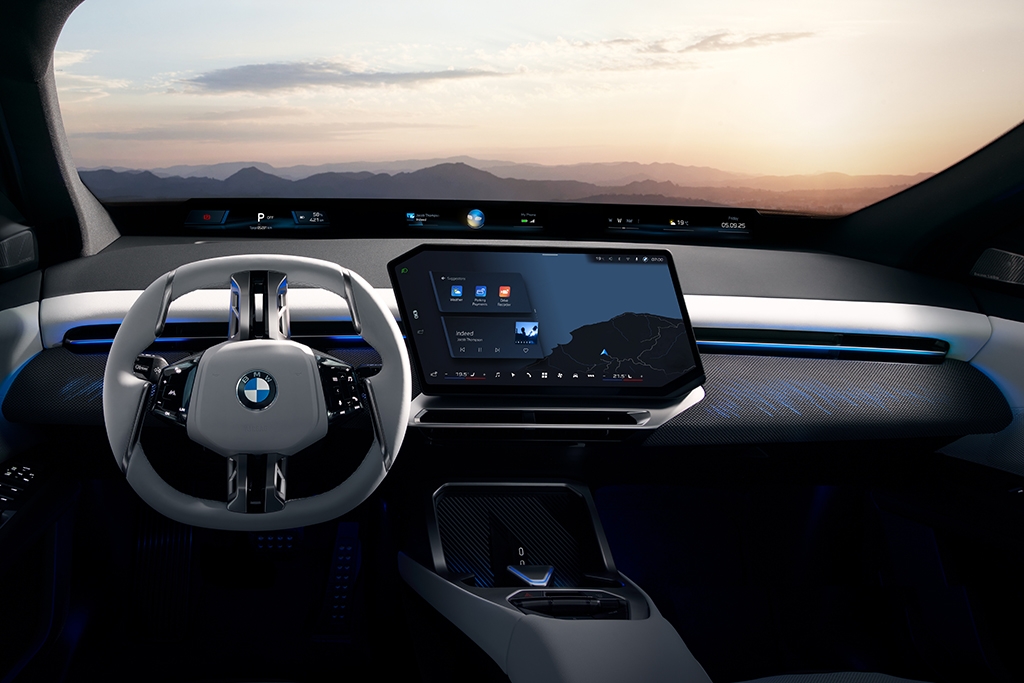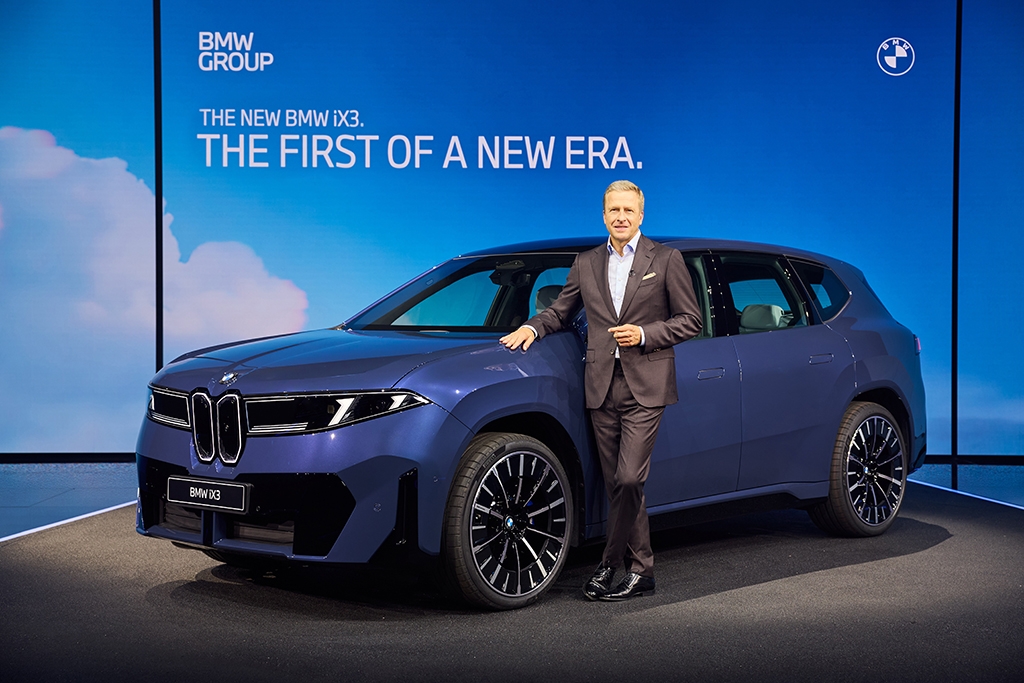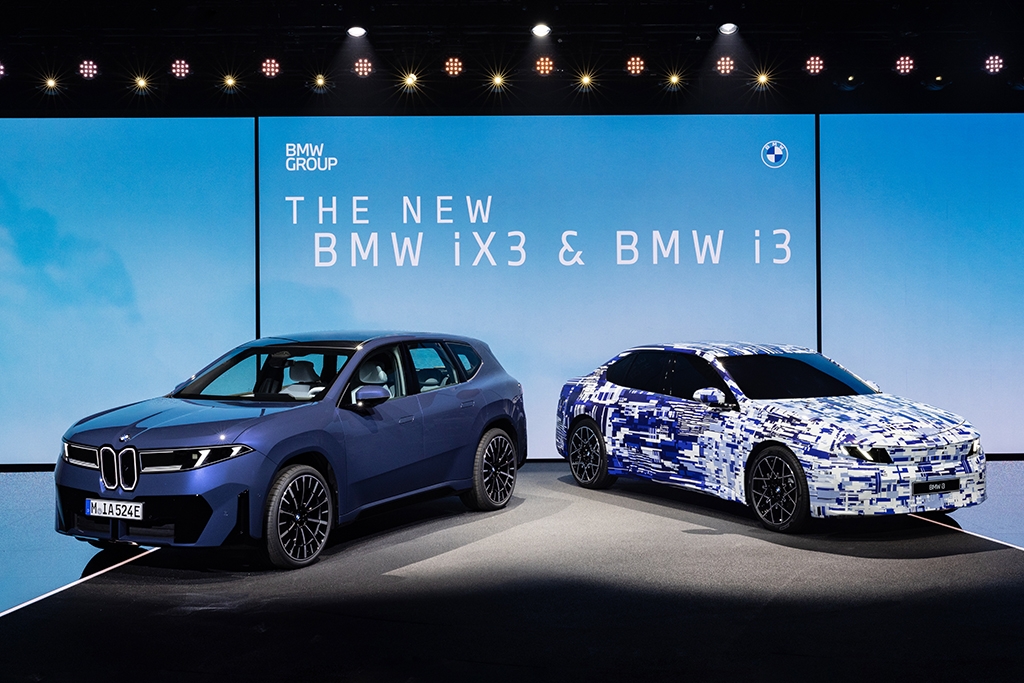All-new BMW iX3 breaks cover, first of new Neue Klasse cars
05 Sep 2025|11,536 views
The hype has been building for years now, and at last, BMW has pulled the covers off what is undeniably a significant turning point for the brand: The all-new BMW iX3.
Marking the first model of BMW's new generation of Neue Klasse cars, the latest iX3 takes a bold step forwards for the brand, and away from both its predecessor and other models in the current BMW lineup. In doing so, it also sends a clear message for what is to come from Munich.
For starters, don't expect close visual similarities to the current combustion-powered X3; the iX3 rides on a cutting-edge new platform built from the ground up for EVs, alongside which BMW has made an ostensible attempt to rewrite its previous design playbooks.
We'll get back to the iX3's looks in just a bit, but arguably worth highlighting above all else are the groundbreaking improvements this platform offers over BMW's pre-existing battery-electric vehicle (BEV) models.
With its new Neue Klasse cars, BMW has seen fit to guard its time-honoured responsibility of defining 'sheer driving pleasure' more fiercely than ever. Key to the new iX3's architecture is a lean but powerful army of four 'supercomputers' dictating all of the car's systems.
BMW is placing an even heavier emphasis on driver engagement than before with its all-new 'Heart of Joy' ECU
One of them, dubbed the 'Heart of Joy', takes charge of its drivetrain, braking system as well as energy recuperation, and is said to calculate all driving dynamics parameters "with a new level of speed and precision".
The benefits are multifold; the iX3 promises unprecedented agility and stability, yet also superb comfort because of its low-speed precision. One of the most interesting figures put out by BMW on this front is its claim that 98% of braking scenarios won't require the car's physical brake callipers to kick into action; they'll be carried out purely by recuperation from the electric motors.
That's all the more impressive when you consider the power iX3 has to offer.
As the first model to integrate BMW's sixth-generation BMW eDrive tech, the car premieres solely in dual-motor guise as the iX3 50 xDrive, with an electrically excited synchronous motor on the rear axle and a new asynchronous motor at the front putting out a maximum 345kW and 645Nm of torque in total.
Perhaps more importantly for buyers with lingering range anxiety, the new architecture places the iX3 among the longest-ranged EVs on the market today.
On the one hand, BMW has touted the efficiency gains realised by its Gen6 eDrive tech: Overall energy consumption has dropped by 20% between the previous iX3 and this one. Additionally, switching from prismatic cells to cylindrical ones while adopting a new cell-to-pack construction approach has allowed BMW to maximise the energy density of the car's battery, whose capacity stands at a towering 108.7kWh.
But that’s not all; new electronics also help to optimise energy management for efficiency gains. Add to these the iX3's slippery drag coefficient of 0.24Cd, and the SUV manages an incredible WLTP-rated range of 805km on a full charge.
When you've finally managed to run its battery flat, recharging (with the right infrastructure in place of course) will be a breeze. The car's upgraded 800V architecture supports a dizzying maximum DC charging rate of 400kW - which BMW states that it can hold at considerable length - meaning you could put 372km worth of range back into its battery in just 10 minutes.
It makes sense that the iX3 wants to wear its new-era Neue Klasse identity loud and clear, then, in light of all of this sophisticated technology lying beneath the surface.
The iX3 is said to return to the essence of BMW with the reinterpretation of iconic elements such as quad headlamps, L-shaped light signatures, and of course, a twin kidney grille
In the brand's terms, the car's design language has been "reduced to the essence of BMW". The quad head lights are still there, but take the form of slim lines serving as the DRLs; the signature L-shapes are also present on the rear, but are now embedded in long and thick tail lamps meant to emphasise the car's width.
Conversely, the oldest-school callback pays surprisingly faithful homage to the original Neue Klasse car: Those twin kidney ‘grilles’ up front are the narrowest we've seen on a modern BMW, not too far off the general size and shape of those found on the BMW 1500 of the 1960s.
For the modern sustainable age, however, you won't find any chrome on the iX3's face. Instead, it gets contour lighting - to emphasise its shape - that's fancier and more extensive than any BMW Iconic Glow grille we've seen so far, tracing even the length between the DRLs and the grille.
The new iX3's wheelbase is more than 30mm longer than the one on the outgoing iX3; it now also comes with a 58-litre frunk
With the new platform also comes new possibilities of playing with space. At 4,782mm long, 1,895mm wide and 1,635mm tall, the new iX3 has gotten a slight growth spurt over its predecessor, with a wheelbase that stretches out to a more generous 2,897mm too. (That's 33mm longer than on the outgoing iX3).
But talking purely in numbers obscures just how much the interior experience has changed. If you thought that the Curved Display paired to BMW OS 8 and 9 was already fairly fancy, all the tech stuffed into the all-new BMW Panoramic iDrive debuting on the iX3 is more stunning still.
The four-piece setup comprises a brand new steering wheel, a new rhombus-shaped infotainment touchscreen angled intentionally towards the driver (this will be flipped for right-hand drive markets), an optional 3D heads-up display (HUD), and most prominently, a new pillar-to-pillar Panoramic Vision Display that effectively replaces a traditional instrument cluster, and runs the full width of the dashboard.
As covered in detail previously, the latter shouldn't be confused with a conventional HUD. It doesn't rely on traditional light projection methods, and is also visible to all occupants on board the iX3, as opposed to just the driver.
And while its sheer expanse and newness may seem overwhelming at first, BMW promises the setup places the driver back in even more fastidious focus.
The elevated positioning of the Panoramic Vision Display ensures essential and relevant information remain comfortably within a driver's natural line of sight out onto the road, while giving him or her up to six configurable widget slots. The second huge benefit that this unlocks? It frees up more vertical range of adjustment for the steering wheel.
Speaking of this, the steering wheel may look quite alien-like against traditional two or three-spoke ones, but is purported to have an ergonomically optimised design, since it no longer has to contend with any concerns about obscuring the instrument cluster.
Furthermore, while the disappearance of labelled buttons on steering wheels has gripped many a manufacturer lately, they are also spread out generously here (albeit via touch-enforced feedback) with dedicated controls retained for functions such as adjusting the volume.
As expected, here lies yet another futuristic but familiar twist: The incorporation of BMW's 'Shy Tech' means that some functions are kept neatly in the background, and do not illuminate until they are deemed necessary for use. Augmenting the entire user experience is a new intelligent voice assistant that is promised to be smarter and more natural to interact with than before with its incorporation of the latest AI Large Language Models.
On the inside too, a wide spread of new interior trims across different colours - ranging from genuine leather, to recycled fabric and Veganza - gives drivers more options for individualisation while staying true to BMW's promise of luxury.
The car's playfulness with exterior lighting also continues here with its fabric dashboard, within which patterned LEDs are nestled. These pour coloured light out gently in tandem with the Experience Mode, or more simply, your hue of choice.
The iX3's long-awaited debut now reveals a driving and ownership experience unique within the BMW lineup - arguably matched not even by flagships like the 7 Series or longtime favourites like the 5 Series. Still, if you're tantalised by all of that latest-generation tech, but not by the body style of a mid-sized SUV, fret not.
Making an appearance at the Munich world premiere to introduce the car, CEO of BMW Group, Oliver Zipse, referred to the iX3 as a "massive leap that will shape the entire brand for years to come".
Oliver Zipse, CEO of BMW Group, has promised that another 40 new and updated models are set to be launched by 2027, carrying over the innovations first seen on this iX3
Innovations debuting on the car - in terms of design, user experience and even electrification - will eventually impact the rest of the brand's lineup, with 40 new and updated models based on this new-generation philosophy set to be launched by 2027. Worth reiterating too is that this new design language and revolutionised user experience will be brought uniformly to both combustion-powered and electric models.
Zipse also took the chance at the event to showcase a camouflaged pre-production prototype of the next model of the Neue Klasse generation: Not a high-riding crossover this time, but a sporty electric sedan.
In line with earlier speculations, the model's name has been confirmed as the BMW i3, and will mark the successor to the 3 Series, bringing BMW's most successful namesake decisively into the electric era.
The hype has been building for years now, and at last, BMW has pulled the covers off what is undeniably a significant turning point for the brand: The all-new BMW iX3.
Marking the first model of BMW's new generation of Neue Klasse cars, the latest iX3 takes a bold step forwards for the brand, and away from both its predecessor and other models in the current BMW lineup. In doing so, it also sends a clear message for what is to come from Munich.
For starters, don't expect close visual similarities to the current combustion-powered X3; the iX3 rides on a cutting-edge new platform built from the ground up for EVs, alongside which BMW has made an ostensible attempt to rewrite its previous design playbooks.
We'll get back to the iX3's looks in just a bit, but arguably worth highlighting above all else are the groundbreaking improvements this platform offers over BMW's pre-existing battery-electric vehicle (BEV) models.
With its new Neue Klasse cars, BMW has seen fit to guard its time-honoured responsibility of defining 'sheer driving pleasure' more fiercely than ever. Key to the new iX3's architecture is a lean but powerful army of four 'supercomputers' dictating all of the car's systems.
BMW is placing an even heavier emphasis on driver engagement than before with its all-new 'Heart of Joy' ECU
One of them, dubbed the 'Heart of Joy', takes charge of its drivetrain, braking system as well as energy recuperation, and is said to calculate all driving dynamics parameters "with a new level of speed and precision".
The benefits are multifold; the iX3 promises unprecedented agility and stability, yet also superb comfort because of its low-speed precision. One of the most interesting figures put out by BMW on this front is its claim that 98% of braking scenarios won't require the car's physical brake callipers to kick into action; they'll be carried out purely by recuperation from the electric motors.
That's all the more impressive when you consider the power iX3 has to offer.
As the first model to integrate BMW's sixth-generation BMW eDrive tech, the car premieres solely in dual-motor guise as the iX3 50 xDrive, with an electrically excited synchronous motor on the rear axle and a new asynchronous motor at the front putting out a maximum 345kW and 645Nm of torque in total.
Perhaps more importantly for buyers with lingering range anxiety, the new architecture places the iX3 among the longest-ranged EVs on the market today.
On the one hand, BMW has touted the efficiency gains realised by its Gen6 eDrive tech: Overall energy consumption has dropped by 20% between the previous iX3 and this one. Additionally, switching from prismatic cells to cylindrical ones while adopting a new cell-to-pack construction approach has allowed BMW to maximise the energy density of the car's battery, whose capacity stands at a towering 108.7kWh.
But that’s not all; new electronics also help to optimise energy management for efficiency gains. Add to these the iX3's slippery drag coefficient of 0.24Cd, and the SUV manages an incredible WLTP-rated range of 805km on a full charge.
When you've finally managed to run its battery flat, recharging (with the right infrastructure in place of course) will be a breeze. The car's upgraded 800V architecture supports a dizzying maximum DC charging rate of 400kW - which BMW states that it can hold at considerable length - meaning you could put 372km worth of range back into its battery in just 10 minutes.
It makes sense that the iX3 wants to wear its new-era Neue Klasse identity loud and clear, then, in light of all of this sophisticated technology lying beneath the surface.
The iX3 is said to return to the essence of BMW with the reinterpretation of iconic elements such as quad headlamps, L-shaped light signatures, and of course, a twin kidney grille
In the brand's terms, the car's design language has been "reduced to the essence of BMW". The quad head lights are still there, but take the form of slim lines serving as the DRLs; the signature L-shapes are also present on the rear, but are now embedded in long and thick tail lamps meant to emphasise the car's width.
Conversely, the oldest-school callback pays surprisingly faithful homage to the original Neue Klasse car: Those twin kidney ‘grilles’ up front are the narrowest we've seen on a modern BMW, not too far off the general size and shape of those found on the BMW 1500 of the 1960s.
For the modern sustainable age, however, you won't find any chrome on the iX3's face. Instead, it gets contour lighting - to emphasise its shape - that's fancier and more extensive than any BMW Iconic Glow grille we've seen so far, tracing even the length between the DRLs and the grille.
The new iX3's wheelbase is more than 30mm longer than the one on the outgoing iX3; it now also comes with a 58-litre frunk
With the new platform also comes new possibilities of playing with space. At 4,782mm long, 1,895mm wide and 1,635mm tall, the new iX3 has gotten a slight growth spurt over its predecessor, with a wheelbase that stretches out to a more generous 2,897mm too. (That's 33mm longer than on the outgoing iX3).
But talking purely in numbers obscures just how much the interior experience has changed. If you thought that the Curved Display paired to BMW OS 8 and 9 was already fairly fancy, all the tech stuffed into the all-new BMW Panoramic iDrive debuting on the iX3 is more stunning still.
The four-piece setup comprises a brand new steering wheel, a new rhombus-shaped infotainment touchscreen angled intentionally towards the driver (this will be flipped for right-hand drive markets), an optional 3D heads-up display (HUD), and most prominently, a new pillar-to-pillar Panoramic Vision Display that effectively replaces a traditional instrument cluster, and runs the full width of the dashboard.
As covered in detail previously, the latter shouldn't be confused with a conventional HUD. It doesn't rely on traditional light projection methods, and is also visible to all occupants on board the iX3, as opposed to just the driver.
And while its sheer expanse and newness may seem overwhelming at first, BMW promises the setup places the driver back in even more fastidious focus.
The elevated positioning of the Panoramic Vision Display ensures essential and relevant information remain comfortably within a driver's natural line of sight out onto the road, while giving him or her up to six configurable widget slots. The second huge benefit that this unlocks? It frees up more vertical range of adjustment for the steering wheel.
Speaking of this, the steering wheel may look quite alien-like against traditional two or three-spoke ones, but is purported to have an ergonomically optimised design, since it no longer has to contend with any concerns about obscuring the instrument cluster.
Furthermore, while the disappearance of labelled buttons on steering wheels has gripped many a manufacturer lately, they are also spread out generously here (albeit via touch-enforced feedback) with dedicated controls retained for functions such as adjusting the volume.
As expected, here lies yet another futuristic but familiar twist: The incorporation of BMW's 'Shy Tech' means that some functions are kept neatly in the background, and do not illuminate until they are deemed necessary for use. Augmenting the entire user experience is a new intelligent voice assistant that is promised to be smarter and more natural to interact with than before with its incorporation of the latest AI Large Language Models.
On the inside too, a wide spread of new interior trims across different colours - ranging from genuine leather, to recycled fabric and Veganza - gives drivers more options for individualisation while staying true to BMW's promise of luxury.
The car's playfulness with exterior lighting also continues here with its fabric dashboard, within which patterned LEDs are nestled. These pour coloured light out gently in tandem with the Experience Mode, or more simply, your hue of choice.
The iX3's long-awaited debut now reveals a driving and ownership experience unique within the BMW lineup - arguably matched not even by flagships like the 7 Series or longtime favourites like the 5 Series. Still, if you're tantalised by all of that latest-generation tech, but not by the body style of a mid-sized SUV, fret not.
Making an appearance at the Munich world premiere to introduce the car, CEO of BMW Group, Oliver Zipse, referred to the iX3 as a "massive leap that will shape the entire brand for years to come".
Oliver Zipse, CEO of BMW Group, has promised that another 40 new and updated models are set to be launched by 2027, carrying over the innovations first seen on this iX3
Innovations debuting on the car - in terms of design, user experience and even electrification - will eventually impact the rest of the brand's lineup, with 40 new and updated models based on this new-generation philosophy set to be launched by 2027. Worth reiterating too is that this new design language and revolutionised user experience will be brought uniformly to both combustion-powered and electric models.
Zipse also took the chance at the event to showcase a camouflaged pre-production prototype of the next model of the Neue Klasse generation: Not a high-riding crossover this time, but a sporty electric sedan.
In line with earlier speculations, the model's name has been confirmed as the BMW i3, and will mark the successor to the 3 Series, bringing BMW's most successful namesake decisively into the electric era.
Latest COE Prices
December 2025 | 2nd BIDDING
NEXT TENDER: 07 Jan 2026
CAT A$109,501
CAT B$115,102
CAT C$77,003
CAT E$119,000
View Full Results Thank You For Your Subscription.



























